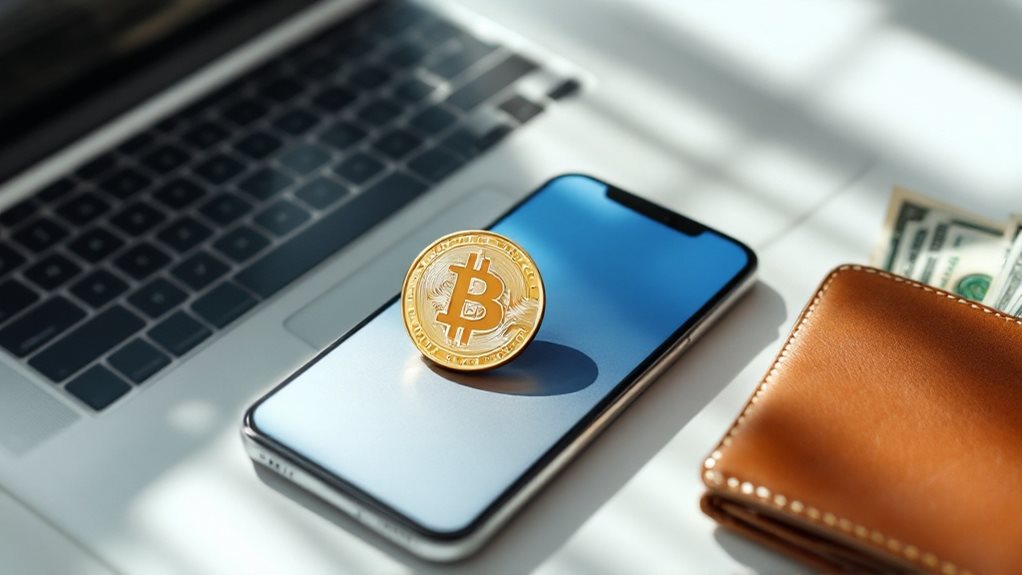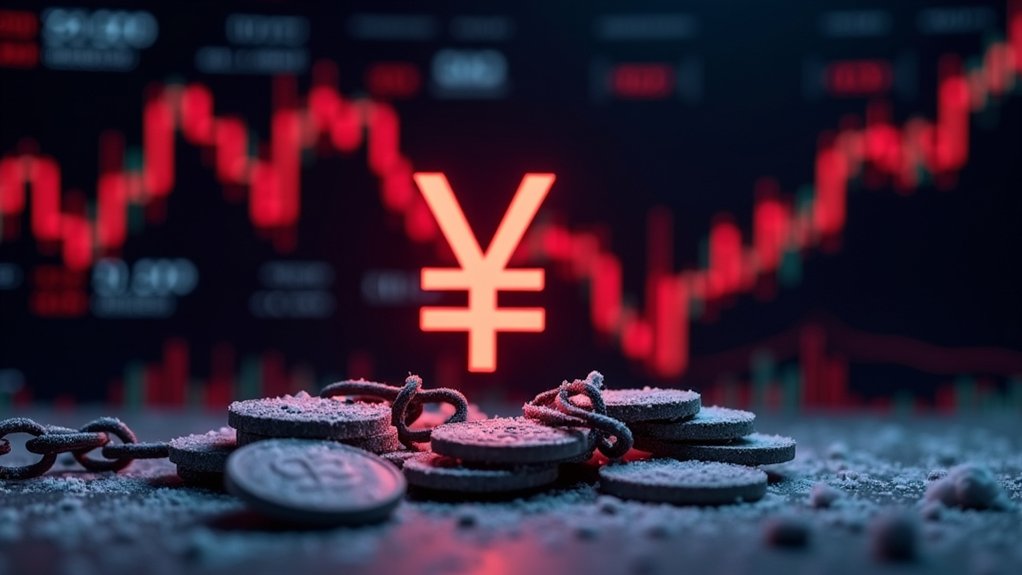Buying Bitcoin starts with selecting a platform like Coinbase, Binance, or PayPal. Users create an account, verify their identity with government ID, and link a payment method. After funding the account, they can purchase Bitcoin through the platform’s trading interface. The Bitcoin can then be stored on the exchange or transferred to a personal digital wallet for security. The process has become increasingly accessible as more platforms offer cryptocurrency services. These basic steps open the door to cryptocurrency investment.
Quick Overview
- Choose a reputable cryptocurrency platform like Coinbase, Binance, or traditional brokers that offer Bitcoin trading services.
- Create an account by providing personal information, completing identity verification (KYC), and setting up two-factor authentication.
- Link your bank account, debit card, or credit card to fund your cryptocurrency account.
- Place a market order to buy Bitcoin by specifying the amount in dollars or Bitcoin quantity.
- Transfer purchased Bitcoin to a secure personal wallet (software or hardware) for enhanced security.

Many people wonder how to begin investing in Bitcoin, the world’s most popular cryptocurrency. The process starts with selecting a platform to buy Bitcoin. Several options exist, including major cryptocurrency exchanges like Coinbase, Binance US, and Kraken, which offer extensive selections of digital currencies. Traditional brokers such as Robinhood have also entered the crypto market. Additionally, payment apps like PayPal, Venmo, and Cash App now allow users to purchase Bitcoin directly. Some buyers prefer peer-to-peer marketplaces or Bitcoin ATMs for in-person transactions.
Once a platform is selected, the next step involves creating and funding an account. Users must provide personal information and complete a verification process known as KYC (Know Your Customer), which typically requires submitting a government-issued ID. Security measures, such as two-factor authentication, help protect the account. Reputable exchanges ensure user safety through strict verification procedures.
Users can then link their bank accounts, debit cards, or credit cards to deposit funds, keeping in mind that platforms may have minimum deposit requirements. Starting with a small initial investment can help minimize potential losses while learning the market dynamics.
The actual purchase of Bitcoin happens on the platform’s trading interface. Users navigate to the Bitcoin trading page and can place different types of orders. A market order allows for immediate purchase at the current price. Buyers specify how much Bitcoin they want, either in U.S. dollars or in Bitcoin amount. The platform displays the transaction details, including any fees, before the user confirms the purchase. Market orders typically execute instantly.
After purchasing Bitcoin, users face important decisions about storage and security. While cryptocurrency exchanges store Bitcoin for their users, many people prefer transferring their Bitcoin to personal wallets for additional security.
These wallets come in two main forms: software wallets, which are apps for mobile devices or computers, and hardware wallets, which are physical devices that store Bitcoin offline. Setting up a personal wallet involves following the provider’s instructions and generating a recovery phrase. This phrase serves as a backup to access the Bitcoin if the wallet is lost or damaged.
Once the wallet is ready, users can transfer their purchased Bitcoin from the exchange to their personal wallet address through a simple transaction process.
The Bitcoin buying process has become increasingly streamlined as more platforms offer cryptocurrency services. Each platform maintains its own fee structure and features, allowing buyers to choose the option that best matches their needs.
The growing availability of Bitcoin through various channels has made it more accessible to people interested in cryptocurrency investment.
Frequently Asked Questions
What Happens if I Lose My Bitcoin Wallet Password?
If someone loses their Bitcoin wallet password, they can’t access their funds until they recover it.
There are a few recovery options: using a backup seed phrase, trying password recovery tools, or working with professional services.
Without recovery, the Bitcoin becomes permanently stuck and inaccessible.
It’s estimated that about 20% of all Bitcoin is locked in lost wallets, worth around $140 billion as of 2021.
Can Bitcoin Transactions Be Traced Back to Me?
Bitcoin transactions can be traced since they’re recorded on a public blockchain that anyone can view.
While transactions use pseudonymous addresses instead of real names, they can be linked to someone’s identity when they use cryptocurrency exchanges that require ID verification.
Law enforcement agencies have special tools to analyze blockchain data and track transaction patterns.
However, some users employ privacy techniques like coin mixing services to make tracing more difficult.
How Long Does It Take for a Bitcoin Transaction to Complete?
Bitcoin transactions typically take 10 minutes to 1 hour to complete. The first confirmation usually happens within 10-20 minutes, but it’s common to wait for 6 confirmations for full security.
Network traffic can affect these times – when it’s busy, transactions might take longer. While most transfers finish within an hour, they can sometimes take up to 16 hours during very busy periods.
The Lightning Network offers near-instant transfers.
Are Bitcoin Mining Profits Worth the Investment in Equipment?
Bitcoin mining profits aren’t guaranteed and depend on several factors.
Equipment costs range from $2,500 to $6,000 for a basic setup. Large mining operations have advantages with cheaper electricity and better equipment.
While Bitcoin’s price of $105,000 in 2025 looks attractive, mining costs run between $26,000-$28,000 per Bitcoin.
Solo miners often earn just cents to $15 per day, while competing against massive mining farms that dominate the network.
What Happens to My Bitcoin if the Exchange Platform Shuts Down?
When an exchange platform shuts down, users can’t access their bitcoin stored on the platform. Their accounts get frozen, and they can’t make withdrawals.
If the exchange goes bankrupt, users become unsecured creditors, which means they might only get back a small portion of their funds after lengthy legal proceedings.
Exchange shutdowns can happen due to various reasons like bankruptcy, hacking incidents, or regulatory issues.
The recovery process can take months or years.





